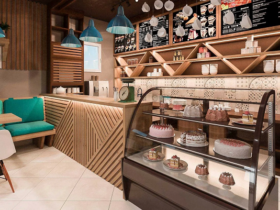The foundation of the building is the basis of the entire structure, so the safety and duration of the object of the object depends on its strength.
The key factor in determining the suitable type of foundation is the type of soil at the site of the constructed structure. However, for the optimal choice, the estimated weight of building structures and the properties of the materials used should also be taken into account. Given the variety of technological solutions that modern construction, the types of foundations are selected for considerations of expediency, depending on the individual characteristics of objects.
Types of foundations for home
Column foundation. Is the most popular due to the acceptable cost. Such foundations are especially relevant in areas where the freezing of the soil is observed. However, when arranging this type of columnar (pile) foundation, some nuances must be taken into account. So, the soil under the structure should be stable, and the laying of the supports should be carried out in the warm season. To install this type of foundation on moving soils, an additional installation of reinforced concrete grillage is required to prevent the side shift of supports. The columnar foundation is designed for installation under buildings with walls of small and medium weight (wooden, frame, shield). Structurally, it is a complex of supports, which are placed in the corners of the future building, under the piers and supports, as well as in other places of concentration of loads.
The strip foundation. It is built in the form of a continuous underground wall along the perimeter of the future building. Ribbon foundations are an ideal option for the construction of heavy stone, brick or concrete structures. This type of foundation is most appropriate if the building is supposed to arrange a basement, garage or basement floor. To date, there are two types of strip foundation: monolithic and assembly.
The monolithic option involves the arrangement of the formwork at the bottom of the pit, between the walls of which a concrete mixture is poured. To improve the thermal insulation of the future building in such a foundation, you can additionally lay a heater (plates from mineral wool, expanded clay chips, etc. D.).
The assembly foundation is built by their overall concrete or reinforced concrete blocks.
Plaet foundation. It is built of monolithic reinforced concrete in the form of a continuous plate or from cross -reinforced concrete beams in the form of a lattice. The foundations of the slab from cross tapes are equipped in cases of construction in areas with uneven. For low buildings of compact layout, a slab foundation can be used when there is no need for a high base, and the surface of the foundation will simultaneously perform the floor function (this option is suitable for garages, sheds and other similar buildings).
Pros and cons of various types of foundations
Depending on the design features of the future building and the estimated level of construction costs, the types of foundations differ in strength, reliability and volume of costs spent on the construction of each of them. The columnar foundations are most economical and not laborious. However, this option is not appropriate if it is necessary to arrange a basement. The advantages of strip foundations are: a high degree of strength, as well as the possibility of using any configuration for the construction of objects (the last property refers to monolithic foundations).
At the same time, in comparison with the columnar, the arrangement of the strip foundation requires much more time, labor and monetary resources. In general, the technology of laying this foundation is quite simple, but at the same time it is very laborious. The advantage of the slab foundation is the possibility of its arrangement at a high level of groundwater, as well as in cases of a large load on the foundation, with insufficient soil strength. Moreover, this option of the foundation is characterized by a significant consumption of concrete and metal for the armature.

